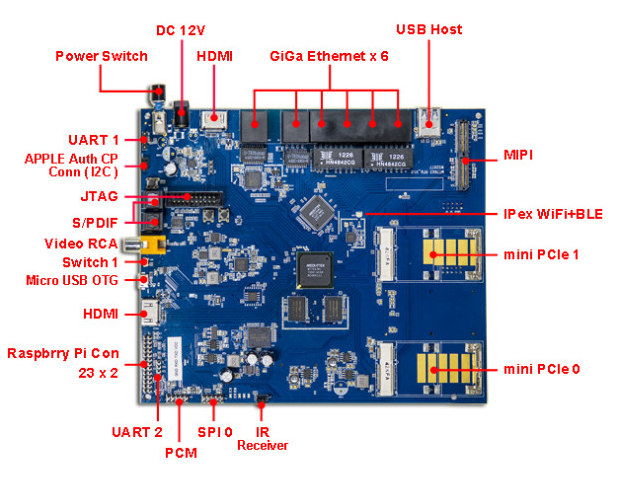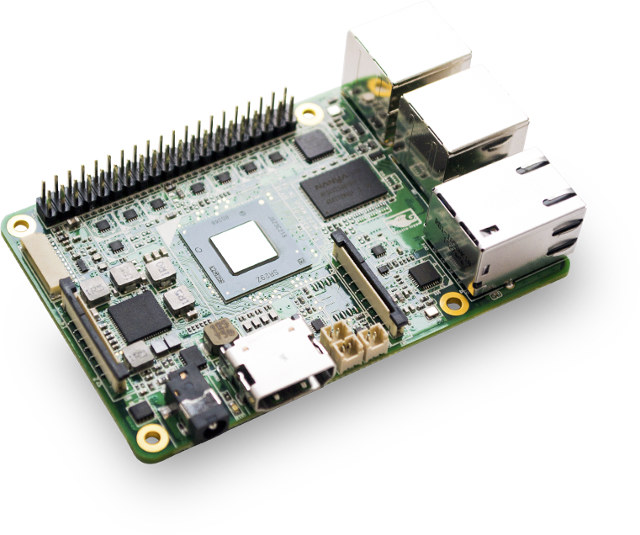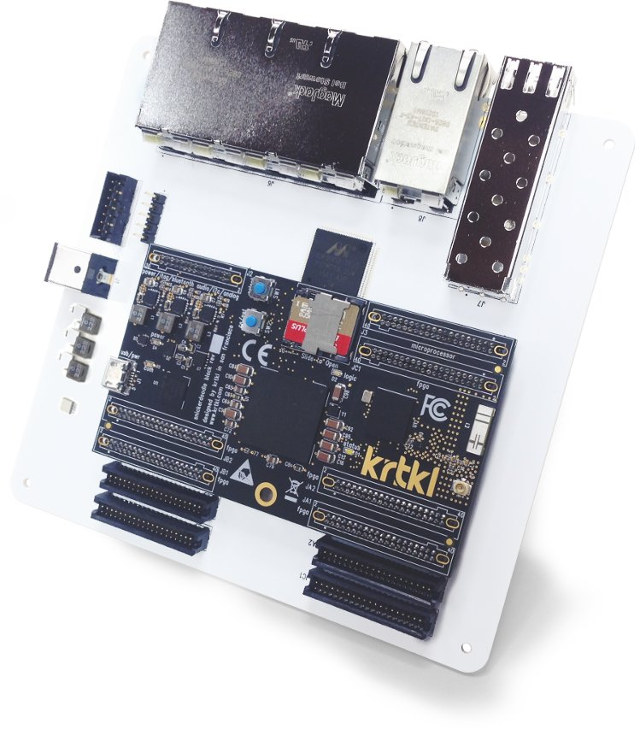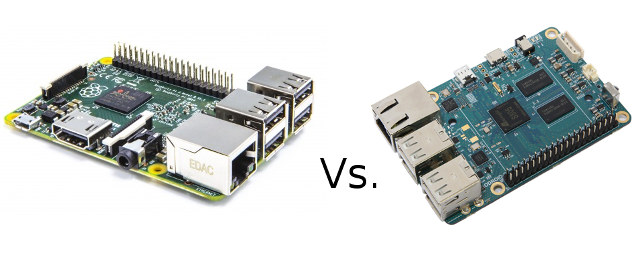We’ve seen a few interesting and relatively powerful router board launched last year, with the likes of MQMaker WiTi or Turris Omnia, AsiaRF has now designed Geek Force board powered by Mediatek MT7623N/MT7623A quad core network processor combined with 2GB RAM, six Gigabit Ethernet ports, and optional 802.11ac and 3G connectivity via the three mPCIe slots available on the board. The board also features two HDMI ports, and supports multimedia capabilities such as H.264, MPEG-2, or VC-1 hardware video decoding. Geek Force board preliminary specifications: SoC – MediaTek MT7623A or MT7623N quad-core ARM Cotex-A7 @ 1.3GHz with Mali-450MP GPU (MT7623N only) System Memory – 2GB DDR3 Storage – 2GB eMMC or NAND Flash + SD card slot up to 128 GB, and maybe SATA via the mPCIe slots Connectivity – 6 Gigabit Ethernet ports (WAN / LAN behavior defined by firmware), 802.11 b/g/n WiFi & Bluetooth 4.0 via MT6625L with […]
UP Board Gets 2GB RAM and 32GB Storage Option, Linux Port in Progress
The UP Board is a Raspberry Pi like board with an Intel Atom processor that’s currently on Kickstarter with a few hours left, and it has just reached its 100,000 Euros stretch goal meaning that beside the 16GB storage / 1 GB version, a version with 32Gb storage and 2GB is now offered. The company also showed their progress with the implementation Debian based Ubilinux on the Intel Atom x5-Z8350 board. That means the specifications have now been updated: SoC – Intel Atom x5-Z8350 “Cherry Trail” quad core processor @ 1.44 GHz (Burst frequency: 1.84 GHz) with Intel Gen8 HD graphics @ 500 MHz System Memory – 1 GB or 2 GB DDR3L-1600 Storage – 16 or 32 GB eMMC Video Output / Display – HDMI, DSI connector Audio I/O – HDMI Connectivity – Gigabit Ethernet USB – 4x USB 2.0 host ports, 1x USB 2.0 pin header, 1x micro […]
giggleBits Hackable ARM & FPGA Router Comes with an SFP Cage and 5 Gigabit Ethernet Ports (Crowdfunding)
Remember Snickerdoodle board? If you don’t, the board is one of the cheapest Xilinx Zynq available on the market, and the project is currently on CrowdSupply, and 75% funded with 28 days left. They’ve just posted an update about a new daughterboard that I found interesting: giggleBits which provides 5 Gigabit Ethernet and an SFP cage on top of WiFi 802.11 b/g/n and Bluetooth connectivity already found on Snickerdoodle board. giggleBits + snickerdoodle specifications: SoC/Memory/Storage/WiFi via Snickerdoodle board: SoC Xilinx Zynq-7010 dual core Cortex A9 processor @ 667 MHz + FPGA with 430K gates or Xilinx Zynq-7020 dual core Cortex A9 processor @ 866 MHz + FPGA with 1.3million gates (~430K ASIC gates) System Memory – 512MB or 1GB LPDDR2-800 Storage – micro SD card slot, 16MB boot flash Ti Wilink 8 – single or dual band 802.11 b/g/n WiFi + Bluetooth 4.0 Expansion – 4x 40-pin TFM headers for access […]
Raspberry Pi 2 / ODROID C1+ Development Boards Comparison
Raspberry Pi 2 Model B board has just been released, and although it’s not a direct answer to ODROID-C1, as Broadcom started the design for BCM2836 SoC for RPI2 a long time ago, both low cost development boards have similar specifications, with a quad core processor, 1GB RAM, Ethernet, and four USB ports, as well as the exact same price: $35. So I’ve decided to compare both in details to find out the actual differences, and which one may be more suitable to a particular application. Let’s get straight to the comparison table. [Updated on November 24 to use ODROID C1+ instead of ODROID C1] Hardkernel ODROID C1+ Raspberry Pi 2 Model B Comment Processor Amlogic S805 quad core Cortex A5 @ 1.5 GHz (Overclockable to 1.7 GHz or more) Broadcom BCM2836 quad core Cortex A7 @ 900 MHz (Overclockable to 1.1GHz or more) Despite the architecture advantage for Cortex […]
Snappy Ubuntu Core is an IoT Linux Distribution for ARM and x86
Canonical has announced a version of Ubuntu specifically designed for IoT devices running Linux, with a low hardware requirements, and a new package manager called snappy, replacing apt-get for this version of Ubuntu, which provides simpler, faster, and more reliable updates, stronger security, and allows roll-backs in case something goes wrong. Easy firmware updates are something missing in most connected device, which means they are more vulnerable to potential hackers, but with snappy security updates should be able to make it regularly, so that if something like heartbleed occurs again, you know your router, home automation gateway, connected washing machine, or robot will be soon patched automatically. Let’s go through the hardware requirements first: Processor – 600 MHz processor (ARMv7 or greater, or x86) System Memory – 128 MB RAM or greater (The system itself uses 40 MB RAM) Storage – 4GB flash / storage for factory reset and system […]






